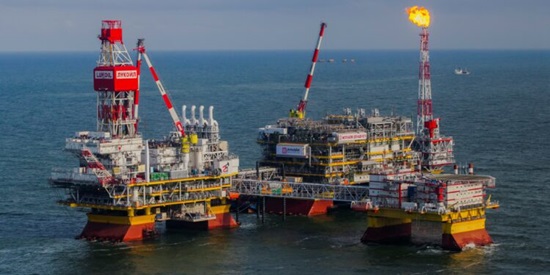Ghana has produced a cumulative 633,300 barrels of crude oil since launching production in 2010, generating approximately $10.7 billion in state revenue, according to a report by the Public Interest and Accountability Committee (PIAC).
The disclosure came from PIAC Coordinator Isaac Dwamena during a media briefing in Accra, where he outlined production trends and government revenues spanning over a decade.
Ghana produced an initial 10.6 million barrels in 2011, reaching a record 34.3 million barrels in 2019. However, recent output has tapered, with 2023 reporting 22.4 million barrels, and production from January to July 2024 amounting to 24.8 million barrels.
Despite variable production levels, government oil revenues have remained a robust contributor to public finances.
Ghana recorded a sharp increase in oil revenue from $327 million in 2012 to $596 million in 2013, but subsequent years saw revenues fluctuate, dipping to $126 million in 2016.
Since then, earnings have rebounded, culminating in an all-time high of $840.7 million in the first half of 2024 alone. The spike marks Ghana’s highest semi-annual oil revenue since production began.
PIAC’s 2024 semi-annual report attributes the revenue growth to several fiscal channels, including Carried and Participating Interest (CAPI), Surface Rentals, the Petroleum Holding Fund (PHF), Corporate Income Tax (CIT), and other income sources. These revenue streams highlight the industry’s enduring impact on Ghana’s fiscal stability.
The report’s data reinforces the critical role oil revenues play within Ghana’s economic landscape, underscoring the government’s need to balance declining production rates with fiscal policies that sustain future revenue generation.
Mr. Dwamena reaffirmed PIAC’s commitment to transparency, advocating for continued oversight as the sector matures within a shifting global oil landscape.
Norvanreports





